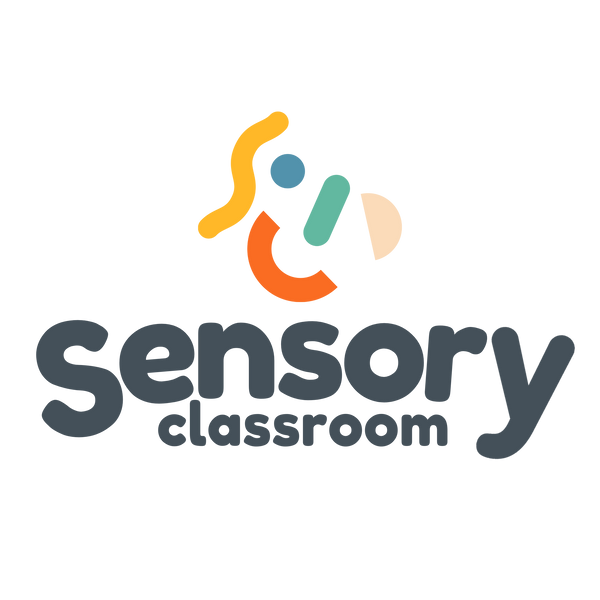The Picture Exchange Communication System (PECS) used to be one of the first tools introduced to young autistic children to support communication. A child is taught to hand over a picture in exchange for something they want. Over time, this is believed to build communication skills through clear, structured exchanges.
You’ll find plenty of research describing PECS as an effective way to support requesting behaviours, and in many cases, people do see results. But there’s more to communication than simply asking for things, and more to evidence than research papers alone. What’s more many autistic adults are calling out for educators and therapists to not use this approach, so why might that be?
What counts as evidence-based practice?
The NCSLT defines evidence-based practice as the integration of three things:
1 clinical expertise / expert opinion
2. External scientific evidence
3. client / patient / caregiver perspectives
That third point is the one I want to focus on. To truly support communication, we need to listen not only to professionals and researchers, but to autistic people themselves. Many autistic adults who experienced compliance-based communication systems, including PECS and ABA, have shared that these approaches did not feel affirming or respectful.
Julie Roberts, founder of the Therapist Neurodiversity Collective, wrote powerfully about this in her article “The Problem with PECS”. She describes how methods rooted in behaviourism often prioritise compliance over autonomy. The message becomes: “We know what you want, but we won’t give it to you until you communicate our way.”
That is not communication. It is compliance.
Why I don’t use PECS anymore
I have five key reasons why I don’t use PECS as a primary communication approach with my learners.
1. It teaches compliance, not communication
When a child reaches for a preferred item or looks towards it, they are already communicating. PECS ignores this by requiring an extra step before the child gets what they want. It turns spontaneous communication into a trained behaviour, reinforcing that adults control when and how communication is allowed, and what it can look like.
2. It removes bodily autonomy
PECS training typically begins with hand-over-hand prompting, where one to two adults physically manipulate a child’s hand to give a picture. This may seem harmless, but it teaches that an adult can take control of a child’s body without consent. For many learners, this erodes trust and increases anxiety. It may also lead to being even more vulnerable to abuse.
3. It limits real communication
PECS focuses almost entirely on requesting nouns. But real communication includes so much more: commenting, protesting, asking questions, sharing ideas and feelings. When children are limited to objects alone, we limit their voice.
Autistic advocate Jordyn Zimmerman describes this clearly: “PECS is a requesting system, not a communication system. It assumes that the student has a language disability, rather than a speech disability.” Restricting communication in this way is not neutral. It tells a child that only certain words and purposes are valued.
4. It doesn’t suit many neurodivergent learning styles
Autistic learners often rely on consistent visual and motor patterns. With PECS, cards constantly move around a binder, making it difficult for a child to build motor memory or visual familiarity. This can increase frustration and reduce independence.
Systems with consistent symbol placement, like a static core board or speech-generating device, allow children to build fluency and confidence over time.
5. It’s expensive, time-consuming and impractical
PECS requires constant printing, cutting, laminating and replacing lost cards. It can cost more than many iPad AAC apps, which allow for quick editing and stable symbol locations. For busy classrooms, this is not sustainable.
So what do we use instead?
At Sensory Classroom ltd, we focus on autonomous communication and modelling without pressure or expectation. Our goal is to support learners to explore, not perform.
If a child is already using PECS, it should never be taken away. But we can gently expand their opportunities by introducing systems that give more freedom.
Here’s what I recommend:
- Coreboards, flipbooks, and AAC devices. Robust and portable systems that allow consistent symbol locations and varied communication functions.
- Modelling and aided language stimulation. Adults model words on the AAC system naturally during real interactions, without expecting a response.
- Core vocabulary teaching – focusing on powerful words like want, stop, help, more, and go, which allow children to say more with less.
If you’re looking for a ready-made structure to teach core words, my Core Word Programme includes a full year of planning and activities designed for AAC users and gestalt language processors. You do not need any equipment or device to get started, we provide core boards as part of the programme.
You can also read my full guide on How to Teach AAC for step-by-step support, or listen to my podcast episodes on The Total Communication Approach (Episode 42) AAC in the Home with High Tech (Episode 43) and Being Speechless (Episode 62)
In summary
PECS may have its place in early intervention history, but we now know more about communication than ever before. Our learners deserve systems that respect autonomy, allow genuine self-expression, and grow with them for life.
Communication should never be about compliance. It should be about connection.
References
American Speech-Language-Hearing-Association. Evidence-Based Practice. https://www.asha.org/research/ebp/
American Speech-Language-Hearing-Association. Code of Ethics.
Costandi, Moheb. (2011). “Visual skills superior in autism, study says.” https://www.spectrumnews.org/news/visual-skills-superior-in-autism-study-says/
Dorney, K. E., & Erickson, K. (2019). Transactions Within a Classroom-Based AAC Intervention Targeting Preschool Students with Autism Spectrum Disorders: A Mixed-Methods Investigation. Exceptionality Education International, 29, 42-58.
Flippin, Michelle, Reszka, Stephanie, & Watson, Linda R. (2010). “Effectiveness of the Picture Exchange Communication System (PECS) on communication and speech for children with autism spectrum disorders: a meta-analysis.”American Journal of Speech Language Pathology, 19(2), 178-95.
Pyramid Educational Consultants. Picture Exchange Communication System® (PECS®). https://pecsusa.com
Roberts, Julie. (2020). “The Problem with PECS®.” https://therapistndc.org/the-problem-with-pecs/
Schenkman, Lauren. (2020). “Motor difficulties in autism, explained.” https://www.spectrumnews.org/news/motor-difficulties-in-autism-explained/
Holmes, Stephanie A., Horn, Madeline M., & Reum, Alyson M. (2018). “Consistent Symbol Location Affects Motor Learning in Preschoolers Without Disabilities: Implications for Designing Augmentative and Alternative Communication Displays.” American Journal of Speech Language Pathology, 27(3), 1010-17.
Zimmerman, Jordyn. (2022). “SLPs as AAC Gatekeepers.” https://communicationfirst.org/slps-as-aac-gatekeepers/

